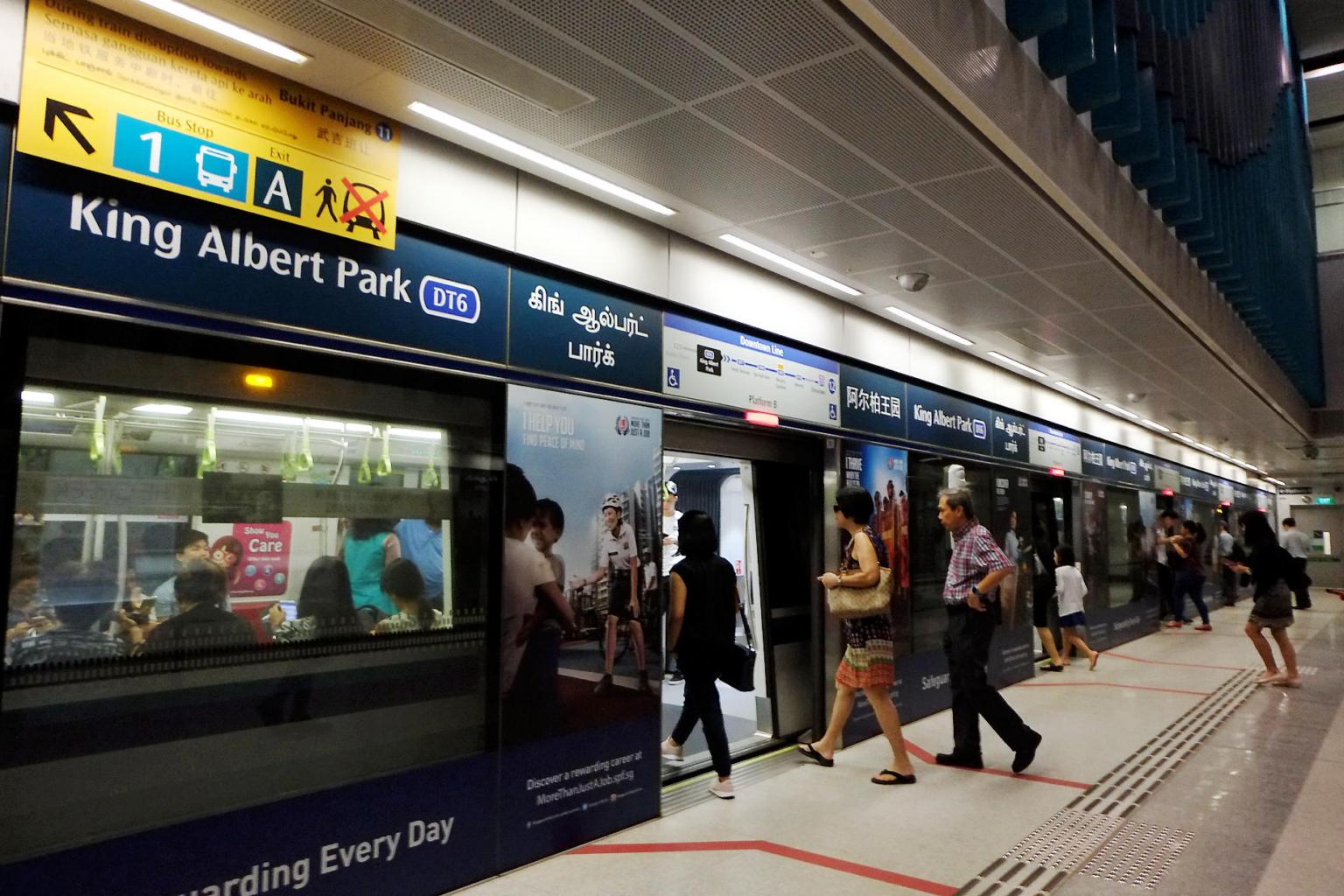Bukit Panjang bus service changes: Ong Ye Kung reveals $60m subsidy a year for Downtown Line
Sign up now: Get ST's newsletters delivered to your inbox

The Downtown Line runs from Bukit Panjang in the west to Expo in the east.
PHOTO: BERITA HARIAN
Follow topic:
SINGAPORE - About $60 million a year in public funds goes towards subsidising operations for a stretch of the MRT Downtown Line (DTL) connecting Bukit Panjang to the city, Transport Minister Ong Ye Kung said on Friday (Aug 7).
He revealed this figure in response to a Bukit Panjang resident who had submitted a petition with more than 2,000 names asking the Land Transport Authority (LTA) to rescind its plans to remove some bus services from the area and change the routes of others.
In an e-mail reply obtained by The Straits Times, Mr Ong noted that the Government built the DTL - which runs from Bukit Panjang to Expo in the east - at a cost of $21 billion.
"It is not a profitable line, so the Government uses public funds to subsidise the running of the line, and operation subsidy comes up to over $60 million a year for the DTL stretch connecting Bukit Panjang to the city," he said.
At the same time, ridership on bus services that run parallel to the DTL has fallen significantly, he said.
For service 171, which will see its route changed, ridership fell by over 30 per cent from 2015 to 2019. For service 700, which will be removed, it was more than a 50 per cent drop in the same period.
He said services 171 and 700 are also being subsidised, costing taxpayers $14 million a year.
"If the bus services are the only public transport option available to residents, LTA is able to justify the public spending," he said. "But with the DTL available, LTA needs to exercise prudence in public spending, and is hence making the changes announced."
Mr Ong told the resident that he fully understood the concerns about service 972 - which has been amended to ply Dunearn Road - having more stops, and service 190 being more crowded after the change.
"I have asked LTA to look into this, and they should be prepared to inject more buses if necessary," he added. "LTA will engage the grassroots adviser, Mr Liang Eng Hwa, and hear out residents for mitigating measures."
He added: "We seek the understanding of residents as we work through these changes, and strike a balance between the needs of various groups of commuters and financial prudence."
The same $60 million subsidy figure for the DTL was cited by Senior Minister of State for Transport Chee Hong Tat in a Facebook post on Friday evening.
Mr Chee said he would be meeting MPs Liang Eng Hwa and Edward Chia on Saturday with LTA representatives to discuss the issue.
Mr Liang previously said he is aware of the ridership drop, but called for a "compromise solution" which does not call for the removal of services.
SBS Transit, a subsidiary of transport giant ComfortDelGro, beat rival SMRT to land the DTL contract with a bid of about $1.6 billion over 19 years from 2013. Annualised, the licence charge works out to be around $84.2 million a year.
Asked why taxpayers were subsidising the running of a line which a private company had undertaken to operate in a competitive tender, the LTA said the sum was necessary to make up for a shortfall in funds necessary for the eventual asset replacement of the line.
"Under the New Rail Financing Framework (NRFF), the operator pays the Government a licence charge for the use of operating assets, such as trains and signalling system. This goes towards their eventual replacement and renewal," an LTA spokesman said.
"As the DTL is not a profitable line, the licence charge paid by SBST is insufficient to cover the annual depreciation, and hence the eventual replacement of the DTL operating assets.
"The difference between the annual depreciation and licence charge paid is the Government's subsidy for DTL operations. This comes up to about $60 million a year for the DTL stretch connecting Bukit Panjang to the city."
The DTL is the first line operated under the NRFF, where the Government owns all fixed and operating assets, and the operator focuses on maintenance and meeting service standards.
Unlike the bus contracting system, the government does not assume revenue risk in the NRFF.
SBS Transit had said that ridership had been lower than projected, but analysts were expecting the line to break even this year. This expectation however was made before the pandemic.
Public transport ridership is at around half the volume it was before the Covid-19 crisis.
Commenting on the $60 million subsidy, Singapore University of Social Sciences transport economist Walter Theseira called for more transparency on rail funding.
"We know that on a systemwide basis, operating costs are now subsidised for rail but there is little information put out about the basis for these calculations, where subsidies are going, to whom, et cetera," he said.
Dr Theseira added that in the case of the DTL, "we should be open" about how the revenue shortfall came out.
"We can accept that it is necessary to rescue a commercial operator which made a mistake in bidding - especially if factors that caused the financial distress are beyond an operator's control - but we don't know how exactly it came about and to what extent it is beyond operator control," said the former nominated MP.
"We are not having a discussion about the right questions in public transport contracting and financing."

